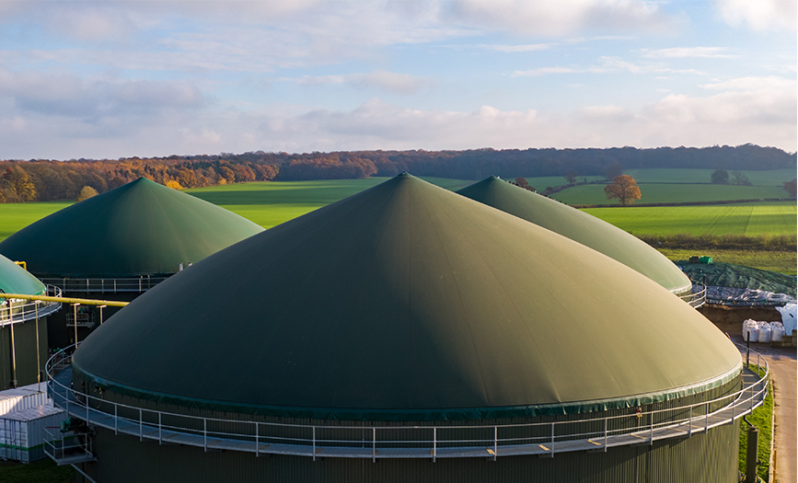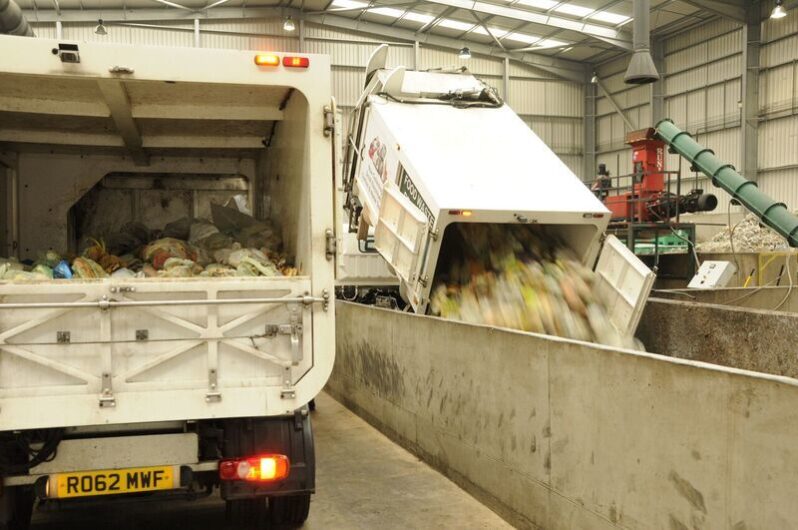Last Updated: 30 December 2024
When it comes to recycling organic material in a sustainable way, one process stands out. It's called anaerobic digestion.

This biological process breaks down organic matter, such as food, in the absence of oxygen. It's a fascinating blend of biology and chemistry, with a dash of environmental science thrown in.
But why should we care about anaerobic digestion? Well, it's a key player in the fight against climate change. It helps reduce waste, produce renewable energy, and cuts down on harmful greenhouse gases.
In the UK, anaerobic digestion is gaining traction. It's seen as a vital tool in achieving the government's ambitious environmental targets.
Here we will delve into the basics of anaerobic digestion. We'll explore what it is, why it's important, and how it's being used in the UK.
Let’s take a closer look.

What is anaerobic digestion?
Anaerobic digestion is a natural, biological process. It breaks down organic materials in the absence of oxygen. This lack of oxygen differentiates it from composting, which relies on the presence of oxygen.
The process involves microorganisms. These tiny helpers transform organic waste into biogas and digestate. The biogas, a mix of methane and carbon dioxide, can be used to generate heat, electricity, or even as vehicle fuel.
Anaerobic digestion can tackle various types of organic waste. This includes food scraps, agricultural residues, and sewage sludge. It's a flexible system, adaptable to different waste streams.
Key benefits of anaerobic digestion include:
Reducing the volume of waste sent to landfills.
Producing renewable energy, thus reducing reliance on fossil fuels.
Creating digestate, a nutrient-rich fertiliser used in agriculture.
In the UK, anaerobic digestion has become integral in sustainable waste management. It aligns with national goals to lower greenhouse gas emissions and promote renewable energy.
Understanding this process helps us appreciate its role in a more sustainable, circular economy. It's a powerful tool for transforming waste into valuable resources.
The four stages of anaerobic digestion
Anaerobic digestion unfolds in four key stages. Each stage plays a crucial role in converting waste into energy.
First, we have hydrolysis. Here, complex organic materials are broken down into simpler compounds. It's the starting point of the digestion journey.

Next, acidogenesis takes the stage. In this phase, those simpler compounds are converted into volatile fatty acids. Acids like acetate form, paving the way for further transformation.
The third stage is acetogenesis. Volatile acids transform into acetic acid, hydrogen, and carbon dioxide. This sets the stage for methane production.
Finally, methanogenesis occurs. Methane-producing bacteria convert the acetic acid into methane and carbon dioxide. This last stage results in biogas, a renewable energy source.
Understanding these stages highlights the scientific elegance of anaerobic digestion. It's a process that combines efficiency with sustainability.
Why do we need anaerobic digestion?
Anaerobic digestion is crucial in addressing modern environmental challenges. It provides an effective solution for managing organic waste. This process transforms waste into energy, reducing landfill dependency and landfill methane emissions..
Biogas production is another compelling reason for anaerobic digestion. Biogas serves as a sustainable energy source. It reduces reliance on non-renewable fossil fuels, contributing to energy security.
The process also plays a role in greenhouse gas reduction. Methane emissions from organic waste are significant contributors to global warming. Anaerobic digestion captures this methane, turning a problem into a resource.
Anaerobic digestion aligns with sustainable development goals. It promotes responsible consumption and clean energy. This makes it an integral part of global environmental strategies.
Environmental benefits
Anaerobic digestion offers numerous environmental benefits. One significant advantage is its ability to reduce landfill waste. By diverting organic materials from landfills, it minimises methane emissions.
Another benefit is the production of renewable energy. Biogas created during the process can power homes and industries. This reduces reliance on finite fossil fuels and supports clean energy goals.
The use of digestate as fertiliser completes the cycle. This nutrient-rich by-product enhances soil without chemical fertilisers. It contributes to sustainable agricultural practices, promoting soil health and biodiversity.
Economic advantages
Economically, anaerobic digestion presents various benefits. It creates opportunities for cost savings and revenue generation. Selling biogas as energy and digestate as fertiliser adds economic value.
This technology also supports job creation. Facilities require skilled workers for operation and maintenance. It sparks growth in rural areas, offering new employment prospects.

Anaerobic digestion in the UK
Anaerobic digestion plays a pivotal role in the UK's sustainable waste management strategy. Our country has made significant strides in recent years to adopt this technology in order to meet its environmental goals. By converting organic waste into biogas, the UK aims to enhance its renewable energy capacity.
Numerous facilities across the country illustrate the varying scales of anaerobic digestion. These range from small farm-based projects to large industrial plants. Such diversity demonstrates the technology's adaptability in meeting needs and capacities at a local level.
The process aids the UK's commitment to reducing carbon emissions. By promoting anaerobic digestion, the UK aligns with its net-zero targets for 2050. This shows the country's dedication to addressing climate change head-on.
Policies and incentives
The UK government actively supports anaerobic digestion through various policies. Incentives are in place to foster its adoption nationwide.
Financial schemes and subsidies encourage investment in anaerobic facilities. These measures aim to increase the utilisation of this eco-friendly technology.
The future of anaerobic digestion
Anaerobic digestion is poised to play a significant role in a sustainable future. With technological advancements, the efficiency of this process is continually improving. These innovations will in turn make it more accessible and cost-effective.
The potential for anaerobic digestion to reduce greenhouse gas emissions and transform organic waste into energy is invaluable.
Research continues to explore new feedstock options, boosting the versatility of anaerobic digestion. The future looks promising for cleaner, greener energy solutions.